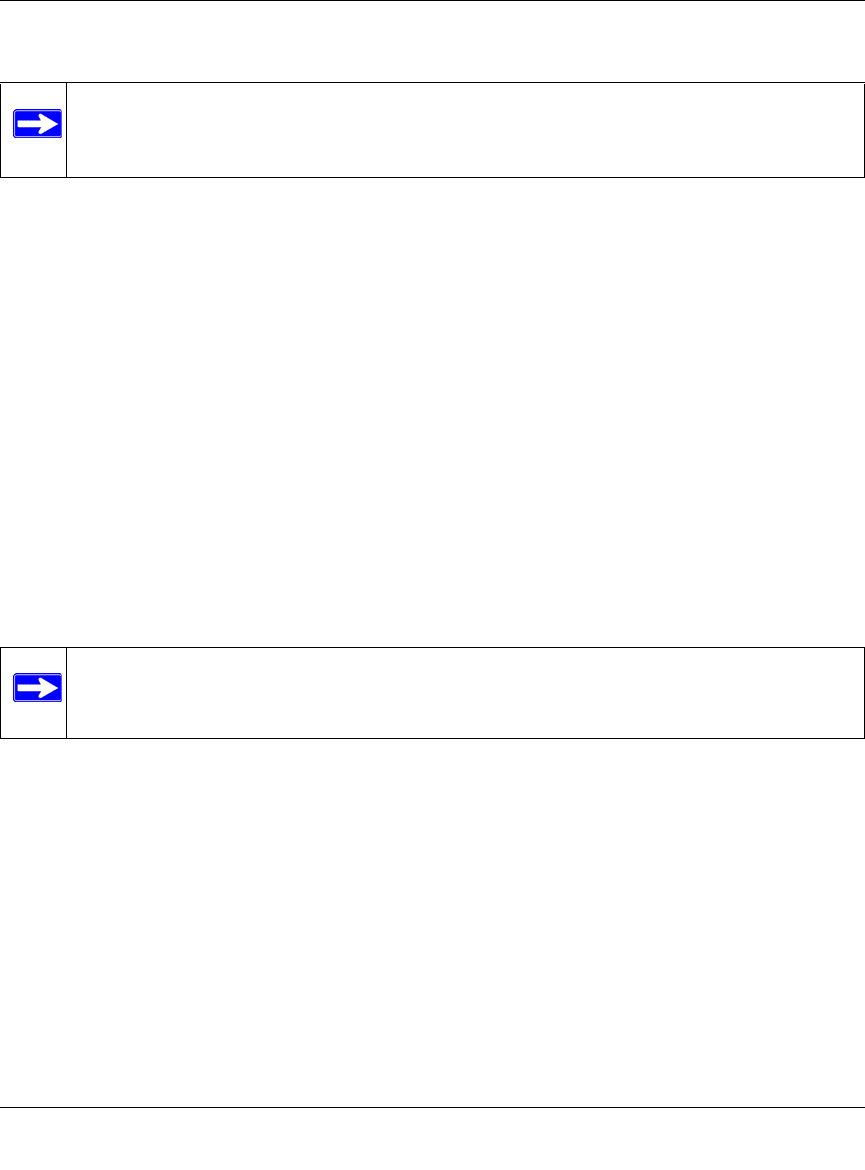
WFS709TP ProSafe Smart Wireless Switch Software Administration Manual
4-16 RF Plan
v1.0, June 2007
Fixed. Fixed APs do not move when RF Plan executes the positioning algorithm.
Choose Yes or No from the drop-down menu. Choosing Yes locks the position of the AP as it is
shown in the coordinate boxes of the Access Editor. Choosing No allows RF Plan to move the AP
as necessary to achieve best performance.
PHY Types. The PHY Type drop-down menu allows you to specify what radio mode the AP
uses. You can choose from one of the following:
• 802.11a/b/g
• 802.11a
• 802.1 b/g
802.11 Types. The 802.11 b/g and 802.11a Type drop-down menus allow you to choose the
mode of operation for the AP. You can set the mode of operation to either Access Point or Air
Monitor.
802.11 Channels. The 802.11a and 802.11b/g channel drop-down menus allow you to select
from the available channels.
• 802.11a channels begin at channel 34 at a frequency of 5.170 MHz and increase in 20-MHz
steps through channel 161 at 5.805 Mhz.
• 802.11b/g channels begin at 1 and are numbered consecutively through 14. The frequencies
begin at 2.412 MHz on channel 1 and increase in 22-MHz steps to Channel 14 at 2.484 MHz.
802.11 Power Levels. The power level drop-down menus allow you to specify the transmission
power of the AP. Choices are OFF, 0, 1, 2, 3, and 4. A setting of 4 applies the maximum Effective
Isotropic Radiated Power (EIRP) allowed in the regulatory domain (country) in which you are
operating the AP.
Memo. The Memo text field allows you to enter notes regarding the AP. You can enter a
maximum of 256 alphanumeric characters in the Memo field.
Note: You would typically set a fixed AP when you have a specific room, such as a
conference room, in which you want saturated coverage. Consider also using fixed
APs for areas with unusually high user density.
Note: The channels available vary depending on the regulatory domain (country) in
which the device is being operated.


















